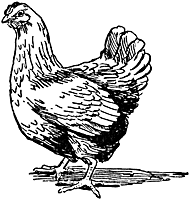2 boxes of Fiber One Bars, 30 bars per box
1 very large bag of corn tortilla strips, Kirkland (Costco's house brand
1 34 ounce box Kirkland Spiced Pecan cereal
2 large loaves light wheat bread (45 calories per slice)
4 jars Kirkland brand organic peanut butter. No sugar added, just peanuts and a bit of salt. Two 28 ounce jars for $7.69
1 64 ounce (4 pound) jar Kirkland animal crackers (no HFCS & organic)
2 large jars Nutella (chocolate-hazelnut spread)
We still have all of the tortilla strips and the crackers. We have most of the bread, cereal, peanut butter, bars, and Nutella. Our youngest starts playing ball this week, and we'll be packing the crackers as a snack twice a week. Peanut butter goes into sandwiches, sauces, and baking. Tortilla strips go into salads, soups, and chili, and are the base for nachos. Nutella is our little one's favorite. She eats it with peanut butter on sandwiches, and dips apples in it.
The food total at Costco came to $66.51.
At King Soopers (Kroger nearly everywhere else), I purchased:
3.15 pounds of organic cherries
1 gallon of organic milk
2.57 pounds of bananas
4 pounds of organic gala apples
6.78 pounds of chicken (@ .78 cents a pound)
2 pounds of low-carb pasta (for my husband)
2 packages of gluten-free Ivory Teff wraps
2 packages of Haribo Gummi Bears on sale (for our daughter)
The chicken will be tomorrow night's dinner &; will be part of other meals after that. We have several apples left, along with most of the pasta, bananas, apples and wraps. We still have over half of the milk, but the Gummis are gone gone gone :)
The total at
The total for the first week is $110.61, which is 31.87% of the lowest food stamp + WIC benefit estimate of $347.00. That doesn't tell the whole story, though.
First, as noted, we still have most of the food purchased above. For much of the week, we ate food we purchased previously, including corn, tortillas, fruit, veggies, cheese, milk, bread, cereal,tomatoes, and so on.
Next week we'll be eating foods purchased this week in addition to some things in the pantry/fridge/freezer. Along with tomorrow night's chicken, we're planning chicken and rice, Musubis (Hawaiian sushi), grilled pronghorn kabobs (thanks to my husband the hunter), sandwiches, bagels, oatmeal, etc. Monday will be "left over" day, when we put together meals made up from whatever is in the fridge. I'll be baking gluten-free bread and probably some cookies next week, in addition to packing meals for our youngest to eat between ball practices.
Speaking of bread: While I was at Costco, I noted that the 2 loaves of bread purchased for my husband &; daughter came to $4.29. On the baking aisle, I noted that 25 pounds of wheat flour came to around $5.50. Add in yeast (less than $4.00 for 2 pounds), oil, and so on, and it becomes clear that its much less expensive to bake bread than to buy it. Even factoring in a second-hand bread machine, it wouldn't take long for the savings to outstrip the initial cost.
If I thought I would need to rely on food stamps for any length of time, I would make a point of purchasing flour and yeast in bulk (and/or starting a sour dough culture), as well as locating a bread machine. I own/moderate a recycling list in my city, and see bread machines given away on a regular basis. I see them at the thrift store for under $10.00 every time I'm there. An investment of under $20.00 (machine, yeast, flour) would yield huge savings.
Previously, I baked nearly all of the bread eaten in our house, but that fell by the wayside when I stopped eating wheat. At this point, I bake my own bread (gluten-free bread is ridiculously expensive - often more than $5.00 a loaf), but purchase wheat bread for everyone else.
The Little Red Hen and her bread
It clearly makes solid financial sense to go back to baking all/nearly all of our bread, so in the weeks ahead, we'll be doing just that.
Namaste.
=^..^=



No comments:
Post a Comment